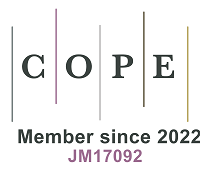REFERENCES
2. Satarug S, Vesey DA, Gobe GC, Phelps KR. Estimation of health risks associated with dietary cadmium exposure. Arch Toxicol. 2023;97:329-58.
3. Wong C, Roberts SM, Saab IN. Review of regulatory reference values and background levels for heavy metals in the human diet. Regul Toxicol Pharmacol. 2022;130:105122.
4. Food and Agriculture Organization of the United Nations/World Health Organization. Summary and Conclusions. In: Proceedings of the Joint FAO/WHO Expert Committee on Food Additives and Contaminants, Seventy-Third Meeting; Geneva, Switzerland; 2011. Available from: https://apps.who.int/iris/handle/10665/44521. [Last accessed on 17 Dec 2024]
5. European Food Safety Authority (EFSA). Scientific opinion: Cadmium in food. 2009. Available from: https://efsa.onlinelibrary.wiley.com/doi/pdf/10.2903/j.efsa.2009.980. [Last accessed on 17 Dec 2024].
6. European Food Safety Authority (EFSA). Scientific opinion: Statement on tolerable weekly intake for cadmium. 2011. Available from: https://efsa.onlinelibrary.wiley.com/doi/pdf/10.2903/j.efsa.2011.1975. [Last accessed on 17 Dec 2024].
7. Satarug S, Đorđević AB, Yimthiang S, Vesey DA, Gobe GC. The NOAEL equivalent of environmental cadmium exposure associated with GFR reduction and chronic kidney disease. Toxics. 2022;10:614.
8. Satarug S. Is chronic kidney disease due to cadmium exposure inevitable and can it be reversed? Biomedicines. 2024;12:718.
9. Shi Z, Taylor AW, Riley M, Byles J, Liu J, Noakes M. Association between dietary patterns, cadmium intake and chronic kidney disease among adults. Clin Nutr. 2018;37:276-84.
10. Kudo K, Konta T, Mashima Y, et al. The association between renal tubular damage and rapid renal deterioration in the Japanese population: the Takahata study. Clin Exp Nephrol. 2011;15:235-41.
11. Satarug S, Vesey DA, Nishijo M, Ruangyuttikarn W, Gobe GC. The inverse association of glomerular function and urinary β2-MG excretion and its implications for cadmium health risk assessment. Environ Res. 2019;173:40-7.
12. Wei Y, Wang X, Sun Q, et al. Associations of environmental cadmium exposure with kidney damage: exploring mediating DNA methylation sites in Chinese adults. Environ Res. 2024;251:118667.
13. Sakuma S, Nogawa K, Watanabe Y, et al. Effect of renal tubular damage on non-cancer mortality in the general Japanese population living in cadmium non-polluted areas. J Appl Toxicol. 2023;43:1849-58.
14. Smereczański NM, Brzóska MM. Current levels of environmental exposure to cadmium in industrialized countries as a risk factor for kidney damage in the general population: a comprehensive review of available data. Int J Mol Sci. 2023;24:8413.
15. Tsai HJ, Hung CH, Wang CW, et al. Associations among heavy metals and proteinuria and chronic kidney disease. Diagnostics. 2021;11:282.
16. Jalili C, Kazemi M, Cheng H, et al. Associations between exposure to heavy metals and the risk of chronic kidney disease: a systematic review and meta-analysis. Crit Rev Toxicol. 2021;51:165-82.
17. Makhammajanov Z, Gaipov A, Myngbay A, Bukasov R, Aljofan M, Kanbay M. Tubular toxicity of proteinuria and the progression of chronic kidney disease. Nephrol Dial Transplant. 2024;39:589-99.
18. Liu D, Lv L. New understanding on the role of proteinuria in progression of chronic kidney disease. Adv Exp Med Biol. ;2019:487-500.
19. Sharma S, Smyth B. From proteinuria to fibrosis: an update on pathophysiology and treatment options. Kidney Blood Press Res. 2021;46:411-20.
20. Slob W. A general theory of effect size, and its consequences for defining the benchmark response (BMR) for continuous endpoints. Crit Rev Toxicol. 2017;47:342-51.
21. Moffett DB, Mumtaz MM, Sullivan DW, Whittaker MH. Chapter 13 - General considerations of dose-effect and dose-response relationships. In: Handbook on the Toxicology of Metals (Fifth Edition). Elsevier; 2022. pp. 299-317.
22. Grandjean P, Budtz-Jørgensen E. Total imprecision of exposure biomarkers: implications for calculating exposure limits. Am J Ind Med. 2007;50:712-9.
23. Satarug S, Swaddiwudhipong W, Ruangyuttikarn W, Nishijo M, Ruiz P. Modeling cadmium exposures in low- and high-exposure areas in Thailand. Environ Health Perspect. 2013;121:531-6.
24. Satarug S, Nishijo M, Ujjin P, Vanavanitkun Y, Moore MR. Cadmium-induced nephropathy in the development of high blood pressure. Toxicol Lett. 2005;157:57-68.
25. Teeyakasem W, Nishijo M, Honda R, Satarug S, Swaddiwudhipong W, Ruangyuttikarn W. Monitoring of cadmium toxicity in a Thai population with high-level environmental exposure. Toxicol Lett. 2007;169:185-95.
26. Honda R, Swaddiwudhipong W, Nishijo M, et al. Cadmium induced renal dysfunction among residents of rice farming area downstream from a zinc-mineralized belt in Thailand. Toxicol Lett. 2010;198:26-32.
27. Bloch MJ, Basile JN. Review of recent literature in hypertension: updated clinical practice guidelines for chronic kidney disease now include albuminuria in the classification system. J Clin Hypertens. 2013;15:865-7.
28. Satarug S, Boonprasert K, Gobe GC, et al. Chronic exposure to cadmium is associated with a marked reduction in glomerular filtration rate. Clin Kidney J. 2019;12:468-75.
29. Levey AS, Stevens LA, Schmid CH, et al; CKD-EPI (Chronic Kidney Disease Epidemiology Collaboration). A new equation to estimate glomerular filtration rate. Ann Intern Med 2009;150:604-12.
30. White CA, Allen CM, Akbari A, et al. Comparison of the new and traditional CKD-EPI GFR estimation equations with urinary inulin clearance: a study of equation performance. Clin Chim Acta. 2019;488:189-95.
31. Levey AS, Becker C, Inker LA. Glomerular filtration rate and albuminuria for detection and staging of acute and chronic kidney disease in adults: a systematic review. JAMA. 2015;313:837-46.
32. Phelps KR, Gosmanova EO. A generic method for analysis of plasma concentrations. Clin Nephrol. 2020;94:43-9.
33. EFSA Scientific Committee; Hardy A, Benford D, Halldorsson T, et al. Update: use of the benchmark dose approach in risk assessment. EFSA J 2017;15:e04658.
34. Slob W, Setzer RW. Shape and steepness of toxicological dose-response relationships of continuous endpoints. Crit Rev Toxicol. 2014;44:270-97.
35. Sand S, Filipsson AF, Victorin K. Evaluation of the benchmark dose method for dichotomous data: model dependence and model selection. Regul Toxicol Pharmacol. 2002;36:184-97.
36. Zhu Y, Wang T, Jelsovsky JZ. Bootstrap estimation of benchmark doses and confidence limits with clustered quantal data. Risk Anal. 2007;27:447-65.
37. Suwatvitayakorn P, Ko MS, Kim KW, Chanpiwat P. Human health risk assessment of cadmium exposure through rice consumption in cadmium-contaminated areas of the Mae Tao sub-district, Tak, Thailand. Environ Geochem Health. 2020;42:2331-44.
38. Swaddiwudhipong W, Limpatanachote P, Mahasakpan P, Krintratun S, Punta B, Funkhiew T. Progress in cadmium-related health effects in persons with high environmental exposure in northwestern Thailand: a five-year follow-up. Environ Res. 2012;112:194-8.
39. Swaddiwudhipong W, Nguntra P, Kaewnate Y, et al. Human health effects from cadmium exposure: comparison between persons living in cadmium-contaminated and non-contaminated areas in northwestern Thailand. Southeast Asian J Trop Med Public Health. 2015;46:133-42.
40. Byber K, Lison D, Verougstraete V, Dressel H, Hotz P. Cadmium or cadmium compounds and chronic kidney disease in workers and the general population: a systematic review. Crit Rev Toxicol. 2016;46:191-240.
41. Doccioli C, Sera F, Francavilla A, Cupisti A, Biggeri A. Association of cadmium environmental exposure with chronic kidney disease: a systematic review and meta-analysis. Sci Total Environ. 2024;906:167165.
42. Qing Y, Yang J, Zhu Y, et al. Dose-response evaluation of urinary cadmium and kidney injury biomarkers in Chinese residents and dietary limit standards. Environ Health. 2021;20:75.
43. Liu C, Li Y, Zhu C, et al. Benchmark dose for cadmium exposure and elevated N-acetyl-β-D-glucosaminidase: a meta-analysis. Environ Sci Pollut Res Int. 2016;23:20528-38.
44. Leconte S, Rousselle C, Bodin L, Clinard F, Carne G. Refinement of health-based guidance values for cadmium in the French population based on modelling. Toxicol Lett. 2021;340:43-51.
45. Schaefer HR, Flannery BM, Crosby LM, et al. Reassessment of the cadmium toxicological reference value for use in human health assessments of foods. Regul Toxicol Pharmacol. 2023;144:105487.
46. Shi P, Yan H, Fan X, Xi S. A benchmark dose analysis for urinary cadmium and type 2 diabetes mellitus. Environ Pollut. 2021;273:116519.







